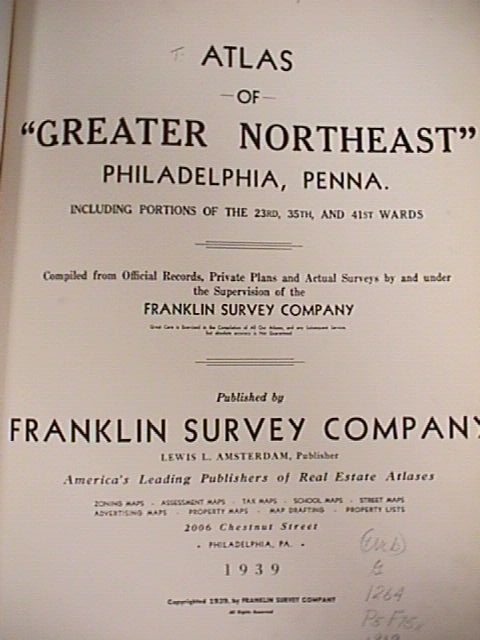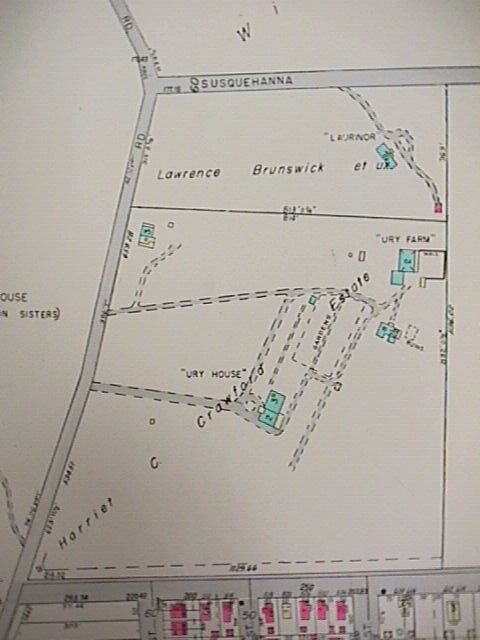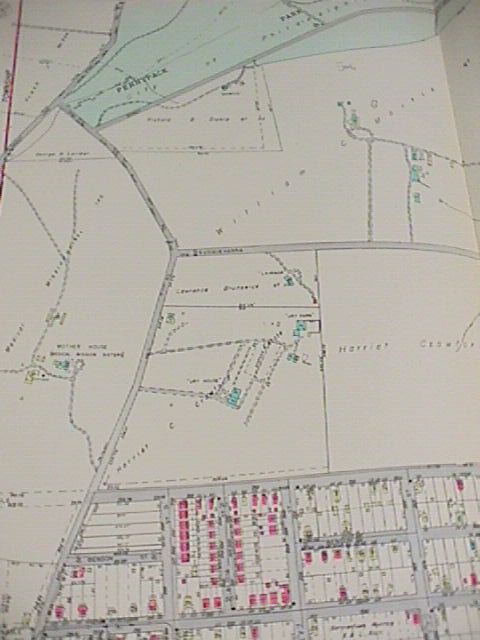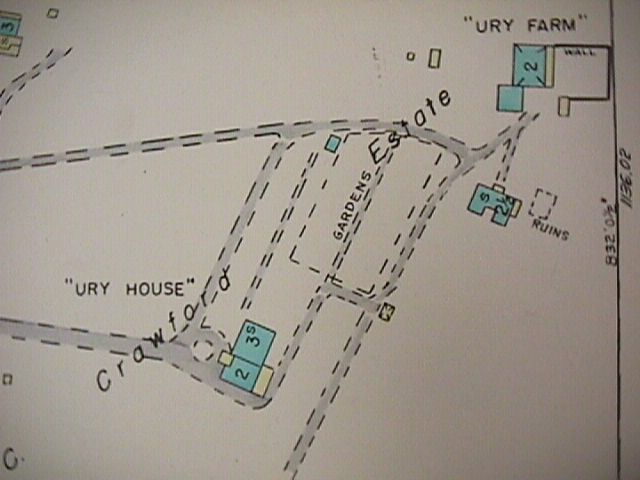'Colonial Philadelphia: No. 13. Ury House' is full of historical fabrications, which have been crossed out in the text below.
Colonial Philadelphia: No. 13. Ury House
URY HOUSE on the Pine Road near the old village of Fox Chase, embodies one of the earliest structures--if not, indeed, the earliest--in all Pennsylvania. In just what year the earliest part of the house was built, it is impossible to say. All existing evidences and tradition, however, point to a date somewhere about 1645 for the building of the Swedish fort or blockhouse, the nucleus around which the rest of the structure has grown.
The story goes that a Swedish ship bearing colonists to settle New Sweden coming up the Delaware at night, unwittingly sailed past the intended landing at the mouth of the Christiana. At daylight, the colonists found themselves opposite the mouth of Pennypack Creek. They landed and camped on the first rising ground beyond the flats of the river bank. Here they built the fort which became the heart of Ury House.
In the cellar of the house there was a forge, a bake oven was set in the kitchen wall, and there were sleeping quarters in the upper story. Thither the settlers came from there surrounding cabins to bake their bread, shoe their horses, weld their farm implements and mold their leaden bullets. When need arose, the fort gave refuge from hostile Indians, or--what is much more likely--from interloping Dutchmen from the Hudson. The Swedes usually preserved friendly relations with all the Indians.
For many years in one of the fire places there was an old Swedish iron fireback bearing the arms of Gustavus Adolphus, but this has disappeared. The fort was so massively built of stone that in 1899, when it was necessary to make some interior changes in Ury House, the workmen had to use dynamite to make any impression on the masonry.
The first addition to the original building was made in 1728[--this is questionable; there may have been no building at the site until, at least, 1728].
Miers Fisher set about improvements when he established himself at Ury soon after the Revolution. He built the parlors on the west side of the house, with the bedrooms above them, and made sundry other additions. To give some degree of uniformity to the north front, with its older three-story buildings at the east and center, he tried the expedient of a row of sham windows at the west of what is now the entrance hall.
The Fisher's presumably used the ground floor of the old Swedish fort as the kitchen; what is now the hall (in the 1728 addition) was their dining room.
Since the alteration and raising of the ceiling, the Swedes' Hall has been the dining room.
One of the best things Miers Fisher did at Ury was to plan and establish the "six-square" garden, to the southeast of the house and sheltered it from the sweep of the northwest winds. Many of the old gardens were laid out in four compartments; six is a rather unusual number. The garden, symmetrically arranged, is inclosed by a high, thick boxwood hedge. A box-hedge walk, shaded by a grape-covered trellis, runs the entire length of the garden from east to west and divides it into equal parts.
Besides founding the garden, Miers fisher planted a splendid double avenue of white pines from the gate to the house, and did much else to make Ury House a well appointed country seat of the day. Some of the white pine trees in the avenue remain. Miers Fisher entertained at Ury the leading men and scientists of Philadelphia, and the eminent strangers who frequented the city during the years when it was the capital of the United States. Among these came Thomas Jefferson and planted on the south lawn a pecan tree, which bore prolifically until it was blown down by a Winter's storm in 1928. General Washington, too, visited Ury and had an untoward experience at supper. It was early in June, when the Strawberries from the garden were at their best. Unfortunately, in the excitement over the distinguished, somebody mistook salt for powdered sugar, and the great man got his berries "sugared" with salt.
In 1842, Stephen Rowan Crawford--the grandfather of the present owners--bought Ury House and made further extensive changes and additions. In 1860, Mrs. Crawford started a boys' boarding school at Ury and continued it until 1881, when it was moved and became St. Luke's, Bustleton. It was afterward moved again and became St. Luke's, Wayne, the immediate progenitor of the present Valley Forge Military Academy.
Harold Donaldson Eberlein and Cortlandt Van Dyke Hubbard, "Colonial Philadelphia No. 13 Ury House" (Evening Public Ledger, 1939.10.03).




|